Phylogenetic Tree Definition
A phylogenetic tree (commonly known as an evolutionary tree or a phylogeny) is a diagram with branches that displays the evolutionary relationships between different biological species.

Source: khanacademy.org
History of Phylogenetic Trees
Since a phylogenetic tree is known as the "tree of life," it's an upgraded understanding of an old conception that says that life progresses from lower to higher tiers like a ladder, referring to it be like the Great Chain of Being. Early perceptions, outlines, and sketches represent a branching phylogenetic tree comprising a paleontological chart. This primarily indicated the geological associations and correlations between plants and animals.
Parts of a Phylogenetic Tree
A simple phylogenetic tree contains several parts that are mentioned below:
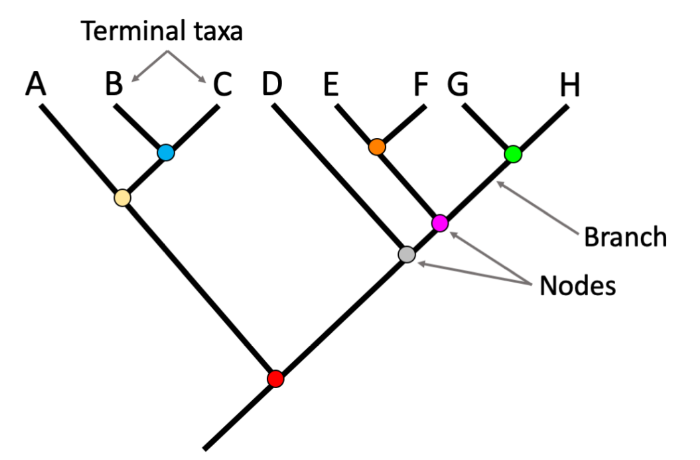
Taxa
The Taxa is known as the "tips" of the tree branches or the study being conducted. You can find the “Taxa” at any systematic level indicating the species, orders, or population. In addition to this, this "Taxa" is called "OTUs," which is abbreviated as "Operational Taxonomic Units."
Branches
The systematic and/or extending lines from a tree are known as its branches representing the interconnection between one or more objects.
Node
The tips of these branches or the point where all these branches are joined together are known as "nodes." Within the nodes, there are two types that are "Internal" and "External" nodes. Internal Nodes are supposed to connect branches, whereas the External Nodes are the angles that join the Taxa together.
Root and Clade
Furthermore, a few trees have a basal node known as the "root" of the tree. Then here comes the "Clade," commonly known as the "ancestor" of all the species branching out.
Strengths and Limitations of a Phylogenetic Tree
Like every systematic model, a phylogenetic tree paradigm has some strengths and limitations which are mentioned below.
Strengths
- The model demonstrates the historical origin of any unit, individual, or species.
- The phylogenetic tree does not rank species, unlike the Linnean model that artificially ranks organisms into Kingdoms. It is known to be a misrepresentation because it shows that different groupings with the common ranks are equivalent.
- Phylogenetic trees tend to provide clues about the historical events of different organisms.
- This model helps in the study of the development and progression of all the existent units.
Limitations
- A Phylogenetic tree demonstrates the hypotheses of the development and progression of life.
- They are only as accurate as of the data on which they have been rooted and demonstrated.
- The data comes from the research and studies that have biases up to some extent.
- Hence, the phylogenetic trees based on the data from research and studies could always be biased, manipulated, or inaccurate.
- This progressive ladder-like phylogenetic tree of craniates has been developed out of the organism that didn’t have a vertebral column.
- Hence, the organisms, objects, or units with different characteristics are placed on different groups of each branch tip solely on the basis of characteristics they share.
Types of Phylogenetic Trees
Dendrogram
A tree is generally known as the Dendrogram. It is not necessarily a Phylogenetic tree and is used to represent and demonstrate something diagrammatically.
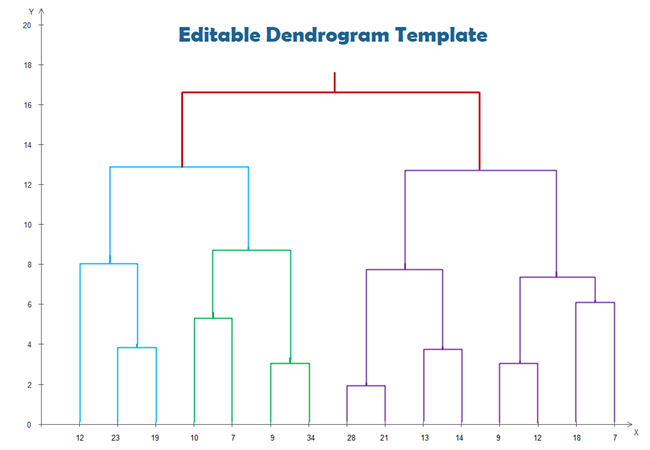
Chronogram
A Chronogram is a type of Phylogenetic tree that represents time via the length of its branches.
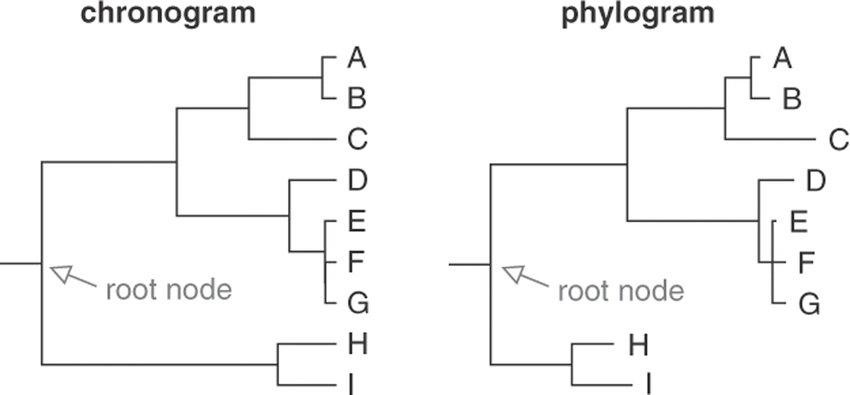
Phylogram
As its name implies, a Phylogram is a Phylogenetic tree whose branch length is proportional to the amount of change in the character.
Cladogram
This type of phylogenetic tree is known to demonstrate a branching pattern only. It means that its branches lack the representation of the time of change in character. Also, its internal nodes do not represent its ancestors.
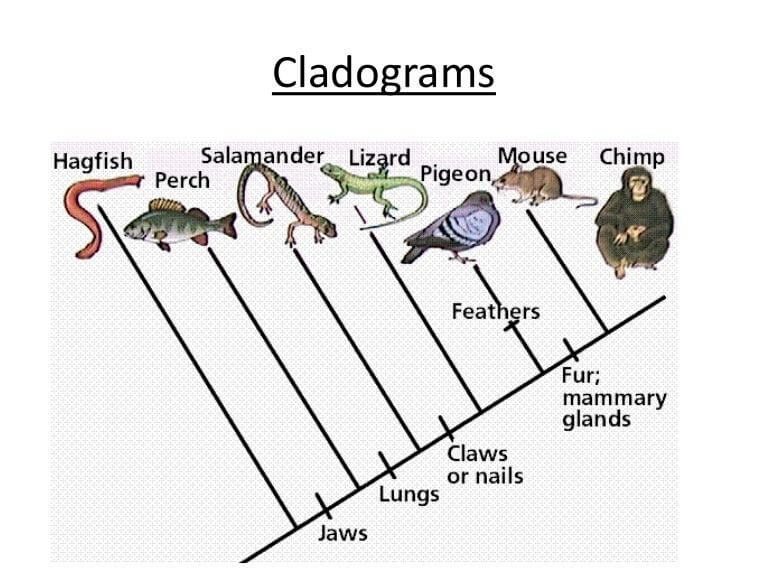
Dahlgrenogram
This type of Phylogenetic tree demonstrates the cross-section.
Phylogenetic Network
A phylogenetic network does not look like a tree, and it is rather a generic diagram or graph. It is primarily used for overcoming the drawbacks or limitations fundamental to trees.
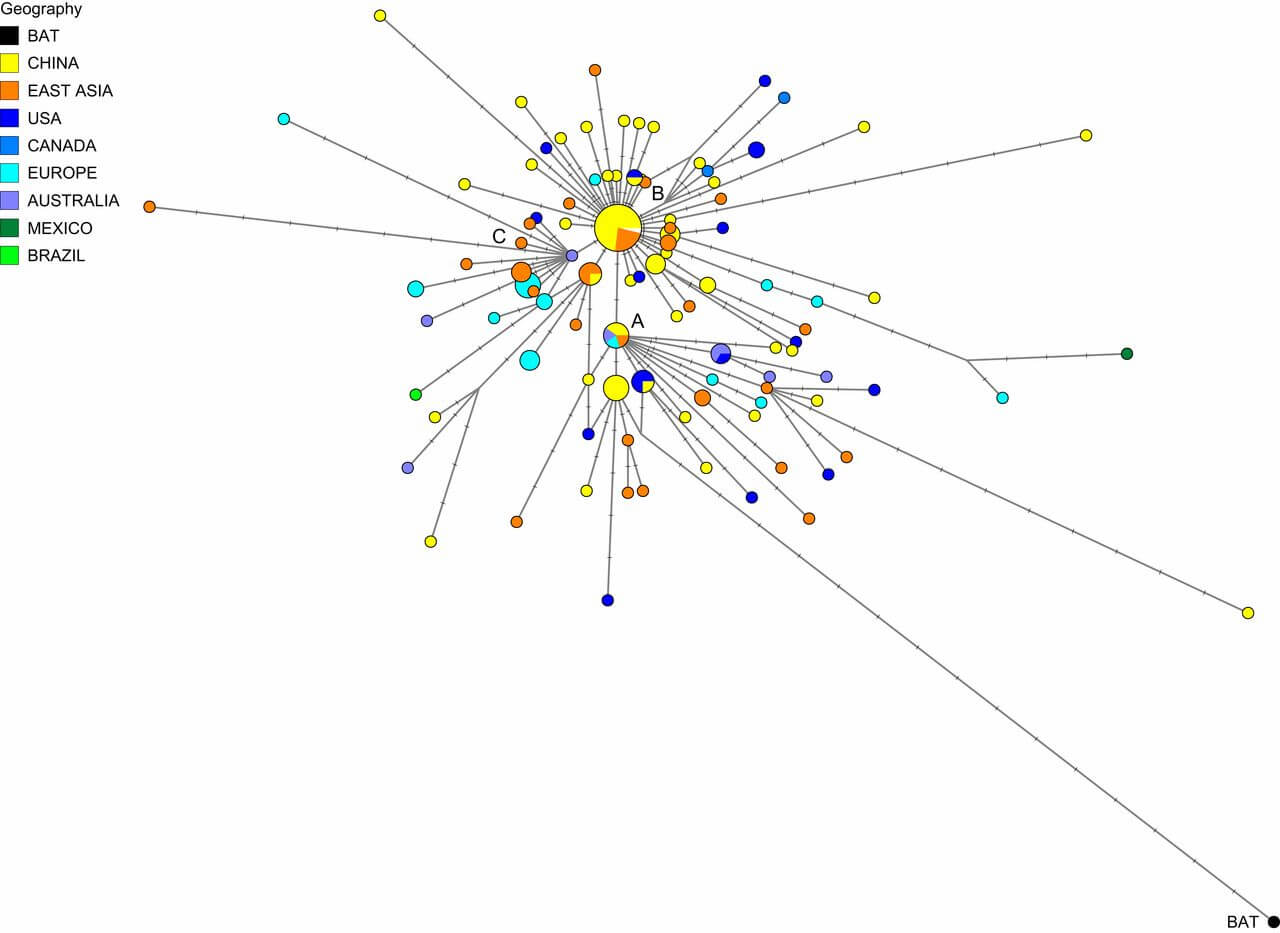
Source: pnas.org
Spindle Diagram
A Spindle Diagram is also known as a Bubble Diagram used to represent taxonomic diversity against geological time. This reflects the variation of the profusion of several taxonomic categories through time.

Differences between a Phylogeny, an Evolutionary Tree, a Phylogenetic Tree, and a Cladogram
| Phylogeny | Evolutionary Tree | Phylogenetic Tree | Cladogram |
|---|---|---|---|
| A phylogeny is a branch of Biology that specially deals with Phylogenesis. | An evolutionary tree is a visual demonstration of the evolution of species from its point of origin. | A phylogenetic tree is a diagrammatic representation of the development of biological species. | It is a branching representation that portrays a cladistic relationship between all kinds of species. |
How to Read a Phylogenetic Tree?
Reading a Phylogenetic tree is the same as reading some family trees. However, we will let you know how to read a Phylogenetic tree step by step.
Step 01: See the Root as Ancestor and Tips as Descendants
The root of the tree means the common ancestor from which all species have been developed. And the tip means the group of species (a part of the common ancestry).

Step 02: See the Daughter Lineages
Step two is to determine the daughter lineages that come from the common ancestry. It splits up into two or more branches creating a line of distinction between one or more species.

Step 03: See the Shared Ancestry Between Lineages (If Any)
The third step is to see if there are any shared ancestry lineages between a group of species. See points B and C in the figure below. Point B and C have unique histories, unlike Point A.

Step 04: Read the Diagram as a Whole
See the below figure, and now you should be able to read it as a whole. The orange color shows that there is a common ancestor of Points A, B, and C. However, the Green color shows that B and C have one different yet common ancestor, and the same goes for Point C.
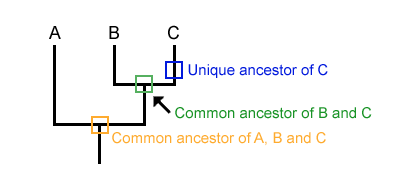
How to Make a Phylogenetic Tree?
You can build a Phylogenetic tree following the below-mentioned steps.
Step 01: Identify the Ancestral Species
The first step is to identify the most different species. Note that it will be having the most mutational differences from other species with the highest number.
Step 02: Identify the Next Most Different Specie
The next step is to look for the following most different species that share a common ancestor with the previous species. Let's call it A.
Step 03: Start Drawing a Phylogenetic Tree
Start drawing a common line and extend its branches to show a possible common ancestor A of the branches B and C.
Step 04: Start Adding Organisms
Look for the other organism’s characteristics and see the most characteristically similar organism for that specific gene.
Step 05: Add Remaining Orgasms
Follow the same method and start adding remaining organisms by looking at the rows and columns and finding genetically identical organisms.
Examples for Phylogenetic Tree of Life
For your understanding, here we have examples of Human Phylogenetic trees and Animal Phylogenetic trees.
Human Phylogenetic Tree
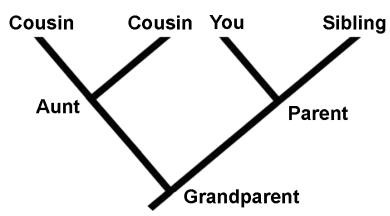
As you can see in the diagram, every species or individual (in this case) has a common ancestor, and that is your grandparent. Then it splits up into two branches: your parent and your aunt (sibling of your parent). And then you, your sibling, and your cousins have a unique history because you were born from different parents yet have the same and common ancestor as your grandparent.
Animal Phylogenetic Tree
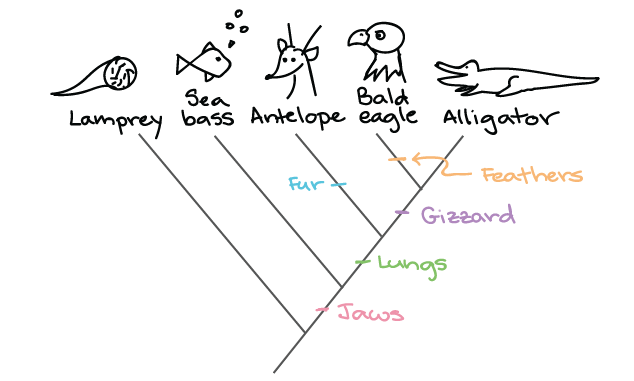
As you can see in the diagram, all animals have the same common ancestor, but they are divided because of their different characteristics. These characteristics are jaws, lungs, gizzards, and feathers. Thus, these characteristics differentiate between the animals mentioned in the diagram that nevertheless have the same ancestor.
Wrapping Up the Article!
All in all, the Phylogenetic tree could be used to display the relationship between other objects as well that is primarily based upon the similarities and differences in their characteristics, and that indicates that all species, objects, individuals, and units have been rooted in a common ancestry. The tree could be drawn in different ways, and this can be virtual or even physical.
However, for simulating the Phylogenetic tree diagram virtually, the best user-friendly software is EdrawMax that helps you create 2D diagrams, flow charts, Gantt charts, and all kinds of Phylogenetic trees and models.

